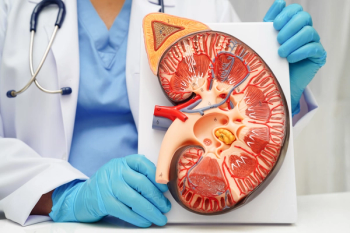
Vitamin C Deters Proliferation of Leukemia Stem Cells
High-dose vitamin C found to revert leukemia stem cells with a specific mutation back to normal cells.
Vitamin C may direct mutated bone marrow cells to mature and die, rather than proliferating and causing blood cancer, according to a study published by Cell.
In leukemia, certain genetic changes reduce the expression of the tet methylcytosine dioxygenase 2 (TET2) enzyme, which encourages stem cells to mature cells.
In the new study, the authors discovered that
“We’re excited by the prospect that high-dose vitamin C might become a safe treatment for blood diseases caused by TET2-deficient leukemia stem cells, most likely in combination with other targeted therapies,” said corresponding study author Benjamin G. Neel, MD, PhD.
Mutations that reduce TET2 function are found in 10% of patients with acute myeloid leukemia (AML), 30% of patients with myelodysplastic syndrome, and 50% of patients with chronic myelomonocytic leukemia, according to the authors.
In these cancers, abnormal stem cells accumulate in the bone marrow and impact blood cell production, which results in anemia, infections, and bleeding. Additionally, the authors report that 42,500 patients each year may develop TET2 mutations, including those with solid tumors and lymphomas.
The new findings focus on the link between TET2 and cytosine, which is a nucleic acid “letter” that make up DNA codes. Each cell type has the same genes, but receive varied instructions to turn on only the genes that are needed, including DNA methylation, according to the study.
The attachment and removal of methyl groups also dictates gene expression in stem cells, which can become various cell types. While this happens as the body is created, the bone marrow keeps a reservoir of stem cells as replacements.
In leukemia, messages that tell a blood stem cell to mature malfunction, which causes the cells to multiply and self-renew rather than creating normal white blood cells.
TET2 changes the molecular structure of methyl groups, which is necessary for them to be removed from cytosines, according to the authors. The demethylation process turns on genes that tell stem cells to mature and self-destruct when necessary. This mechanism is intended to prevent cancer, but is altered in patients with blood cancer with TET2 mutations.
In the study, the authors engineered mice whose TET2 gene could be turned on or off to determine how it plays a role in blood cancers.
The investigators found that turning off TET2 resulted in abnormal stem cells; however, the changes were reversed when the enzyme was turned back on, according to the study.
Previous studies showed that vitamin C stimulated the activity of TET1, TET2, and TET3. Since 1 of 2 copies of TET2 is usually affected, the authors believed that high-dose vitamin C could reverse the effects of the deficient gene.
The authors discovered that vitamin C was as effective as turning TET2 back on in mice. High-dose vitamin C promoted demethylation and caused stem cells to mature. This treatment also inhibited the growth of leukemia stem cells implanted into the mice, according to the study.
“Interestingly, we also found that vitamin C treatment had an effect on leukemic stem cells that resembled damage to their DNA,” said first study author Luisa Cimmino, PhD. “For this reason, we decided to combine vitamin C with a PARP inhibitor, a drug type known to cause cancer cell death by blocking the repair of DNA damage, and already approved for treating certain patients with ovarian cancer.”
The investigators found that the combination of vitamin C and the PARP inhibitor had an improved effect on leukemia stem cells and shifted them back to normal.
The authors hypothesize that vitamin C may also drive leukemia cells without a TET2 mutation towards death since it increases the enzyme’s expression, according to the study.
“Our team is working to systematically identify genetic changes that contribute to risk for leukemia in significant groups of patients,” said corresponding author Iannis Aifantis, PhD. “This study adds the targeting of abnormal TET2-driven DNA demethylation to our list of potential new treatment approaches.”
Newsletter
Stay informed on drug updates, treatment guidelines, and pharmacy practice trends—subscribe to Pharmacy Times for weekly clinical insights.
















































































































































































































